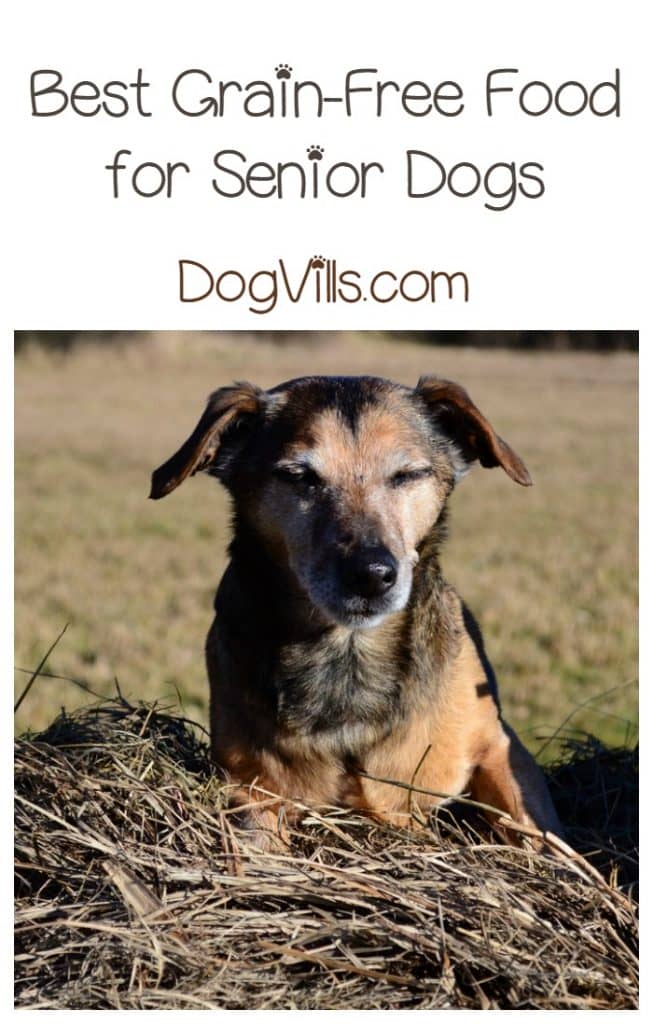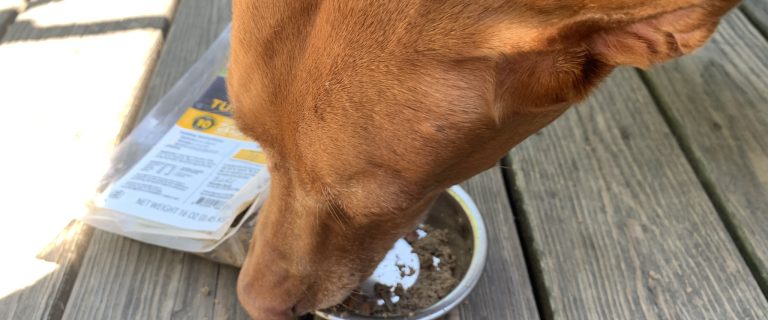Senior dog food is an essential part of your older dog’s health. While breed specific foods may be bunk (in my opinion) senior food is not. That’s because most food for older dogs is formulated to meet the requirements of less active dogs. When you’re looking for a grain-free senior dog food, there are some important things to remember.
If you’re a regular reader, by now you’ve noticed quite a bit of crossover in this series on foods. That’s because when you get right down to it, looking for any dog food comes down to ingredients. So whether we talk about seniors or breeds or grain-free, I want to make sure we look at what goes into the food and not what goes on the label.
Related: Choosing the Best Senior Dog Food for Healthy Joints
Finding the Right Grain-Free Senior Dog Food
Foods developed for senior dogs have a couple of things in common. First, they’re almost always lower in calories. Second, they almost always have a higher amount of fiber and fewer carbohydrates. In both instances, I say, “almost always” because some certainly don’t do that.
Reduced Calorie
It’s important to look for reduced calorie foods when you’re looking at food for your old boy or girl. Older dogs move less than younger ones. Even the spriest 12-year-old lab will still be slower than he was when he was two. Because of the decreased activity, you want to feed fewer calories. Feeding a senior dog food with fewer calories helps keep your dog at the correct weight. Keeping your older dog at the proper weight helps protect him from joint issues, as well as the development of diabetes and cancer, both of which are common among older dogs.
Omega Fatty Acids
Omega fatty acids are good for any dog at any age, but they are even more important for older dogs. Omega fatty acids reduce whole body inflammation which can easy old, achy joints. Also, omega fatty acids have been shown to increase the efficacy of antioxidants, which we’ll get to presently.
Antioxidants
Antioxidants help fight free radicals, which are destructive little bombs of unpaired molecules. These little organic destructors are always trying to pair with something, which leads to them damaging other cells. Antioxidants blast out those free radicals, which helps improve overall health, especially in geriatric dogs who don’t exactly have spry cells to begin with.
When looking for a senior dog food, try to find one with a high concentration of antioxidants. Because grain-free is often associated with limited ingredients, it may be hard – or ill-advised, depending on your dog’s system – to look for food with added berries. However, you can find dog foods with an added antioxidant complex.
Less Carbs
In addition to fewer calories, look for a grain-free senior dog food with fewer carbs. Just as with calories, a less active dog needs fewer carbs. Just like people, if dogs take in more carbs than they need, those carbs will turn to fat. Look for food with a low carb count but that keeps the fat and protein levels high. Dogs need adequate protein and fat no matter their age.
The Same Rules Apply to All Senior Dog Food
Whether you’re going grain-free or not, the same rules apply to all senior dog food. When you’re looking for good food, take into account how the ingredients can help further your dog’s health.
Talk with your vet as you look for the right grain-free senior dog food, and use these guidelines along with his or her advice to find the senior dog food that’s right for your old timer with GI issues.
Do you have a favorite grain-free senior dog food that you use? Share in the comments!
Author
-

A former Veterinary Assistant at Southwest Animal Care Hospital, Ben is an animal lover, blogger, and all-around geek. Along with writing for DogVills, Ben runs his own virtual assistant company, BizzyBim.
View all posts



